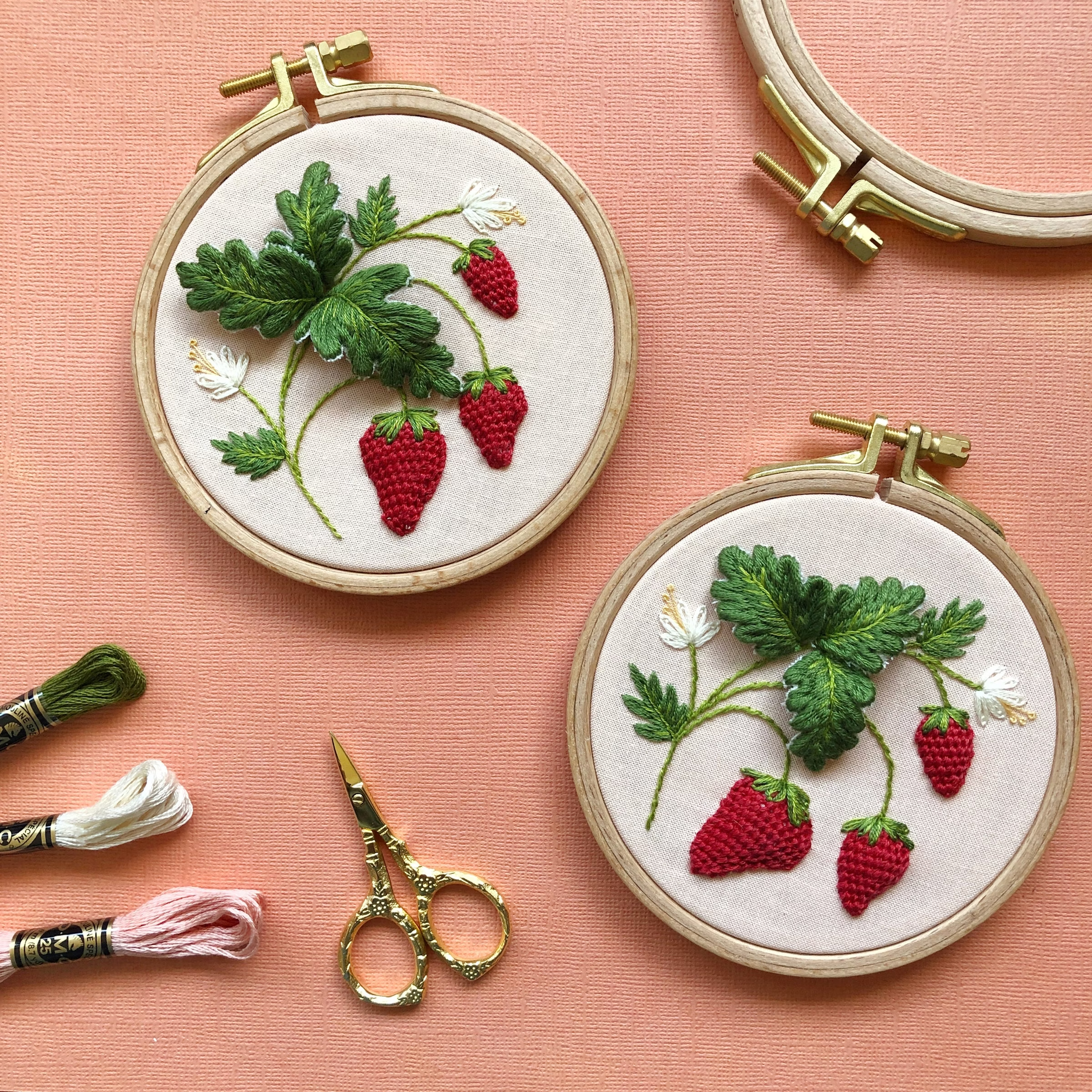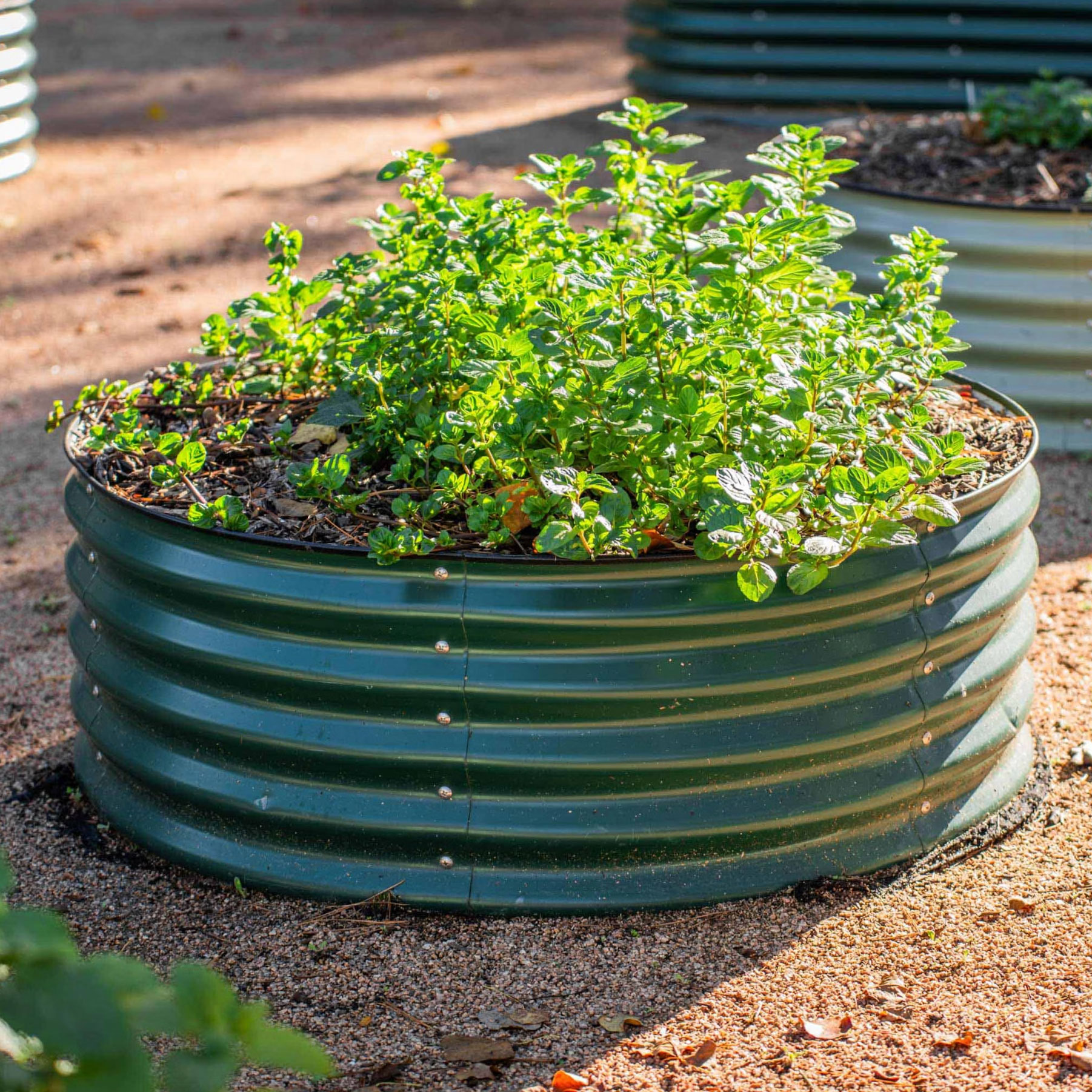Don’t Lose Your Strawberries! Check For These 7 Strawberry Diseases & Protect Your Strawbs
Although strawberry plants are generally robust, you do need to keep an eye out for infections. Here are the 7 main strawberry diseases to watch out for
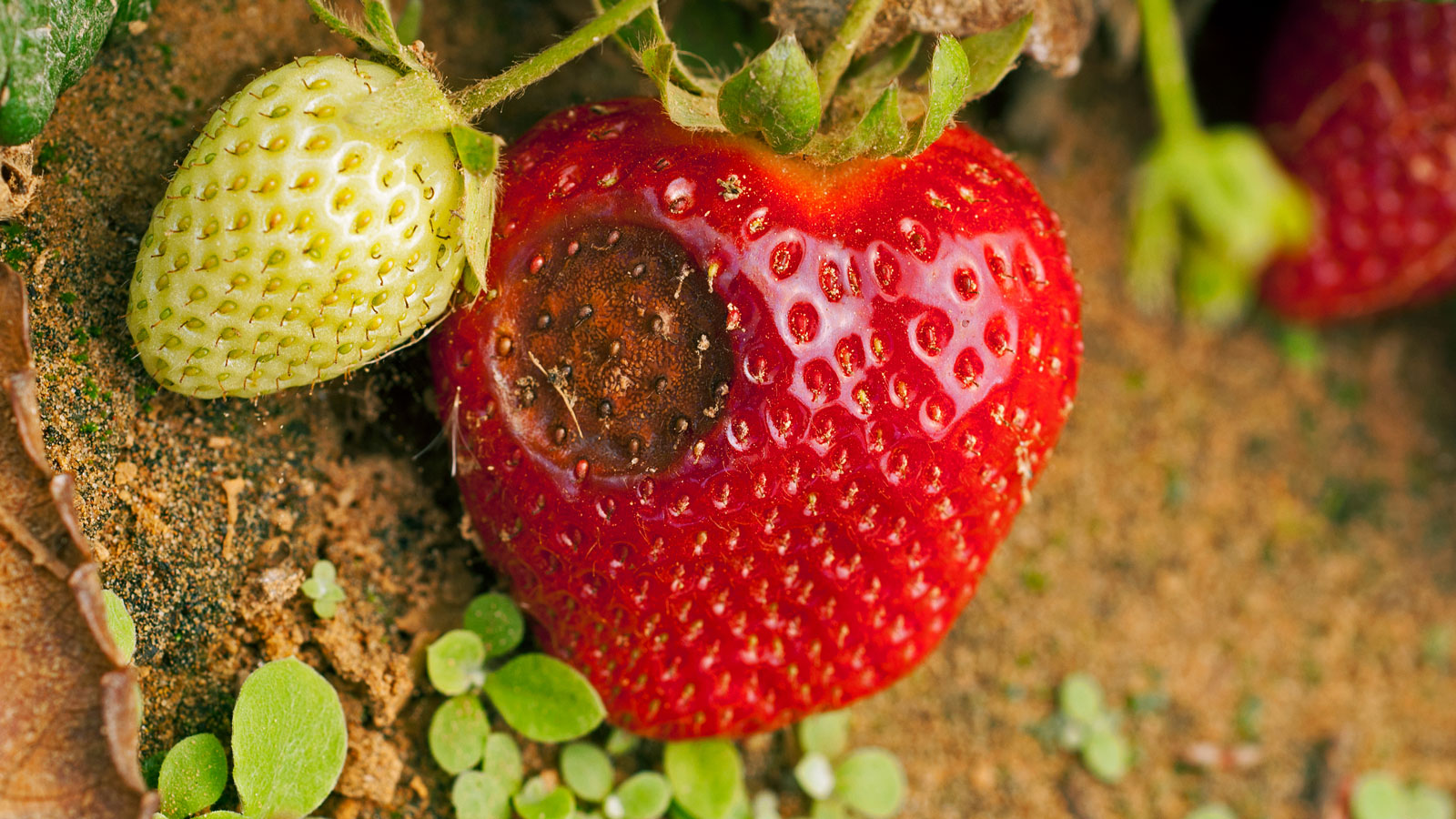

A signature of the summer garden, nothing beats the taste of fresh, juicy strawberries. While growing the plant is relatively simple, care is needed to keep beds and containers looking their best. When growing your own strawberries, routine monitoring can help you pick up on sudden changes in appearance – which can often be a sign of strawberry diseases.
Here, we round up the most common strawberry plant diseases, enabling you to correctly identify a potential problem quickly and effectively. If you’re worried about strange leaf colors, changes in fruit, or no strawberry fruit at all, be sure you read this. The sooner you can step in, the more chance you have of ensuring your precious harvests don’t take a hit. If you suspect strawberry disease, take action fast – this guide can help you do it right.
Identifying Key Strawberry Diseases
Learning to properly identify disease on strawberry plants can be difficult. Unlike strawberry pests, there is a little bit of overlap in the way certain diseases present – so an assessment of multiple symptoms is important.
With careful inspection, most issues can be identified quickly. Keen observation skills are of the utmost importance. This includes monitoring both fruit and foliage, looking for sudden or unusual changes in color, texture and overall health.
It also helps to get familiar with the strawberry plant cultivar being grown, taking tolerance and resistance of each type into account. Follow this guide, and you’ll be well on your way to growing healthier, bigger strawberries – and more of them!
1. Anthracnose
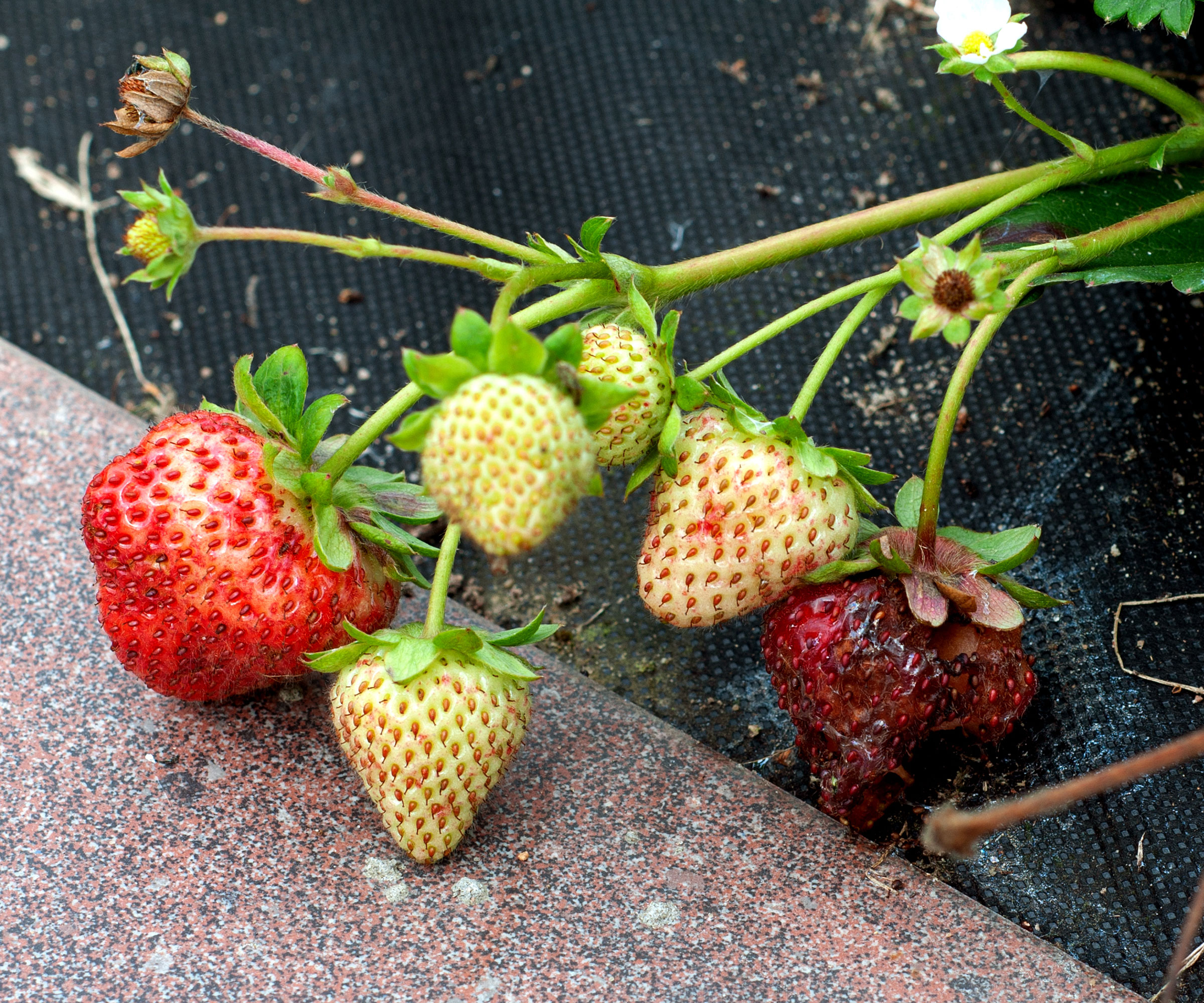
Anthracnose, caused by various Colletotrichum fungi, affects almost every part of the strawberry plant. Though anthracnose disease is most common throughout warmer regions, it may also occur where conditions are both cool and wet. Symptoms which result in rot are most conspicuous, occurring on the plant's fruit as well as the crown.
Infection can be severe, nearly always leading to a reduction in crops and loss of plants. As the disease is known to overwinter within beds, control of infections can be difficult. Still, with very early detection, you could salvage some plants with the use of fungicide and the routine removal of infected matter.
2. Black Root Rot
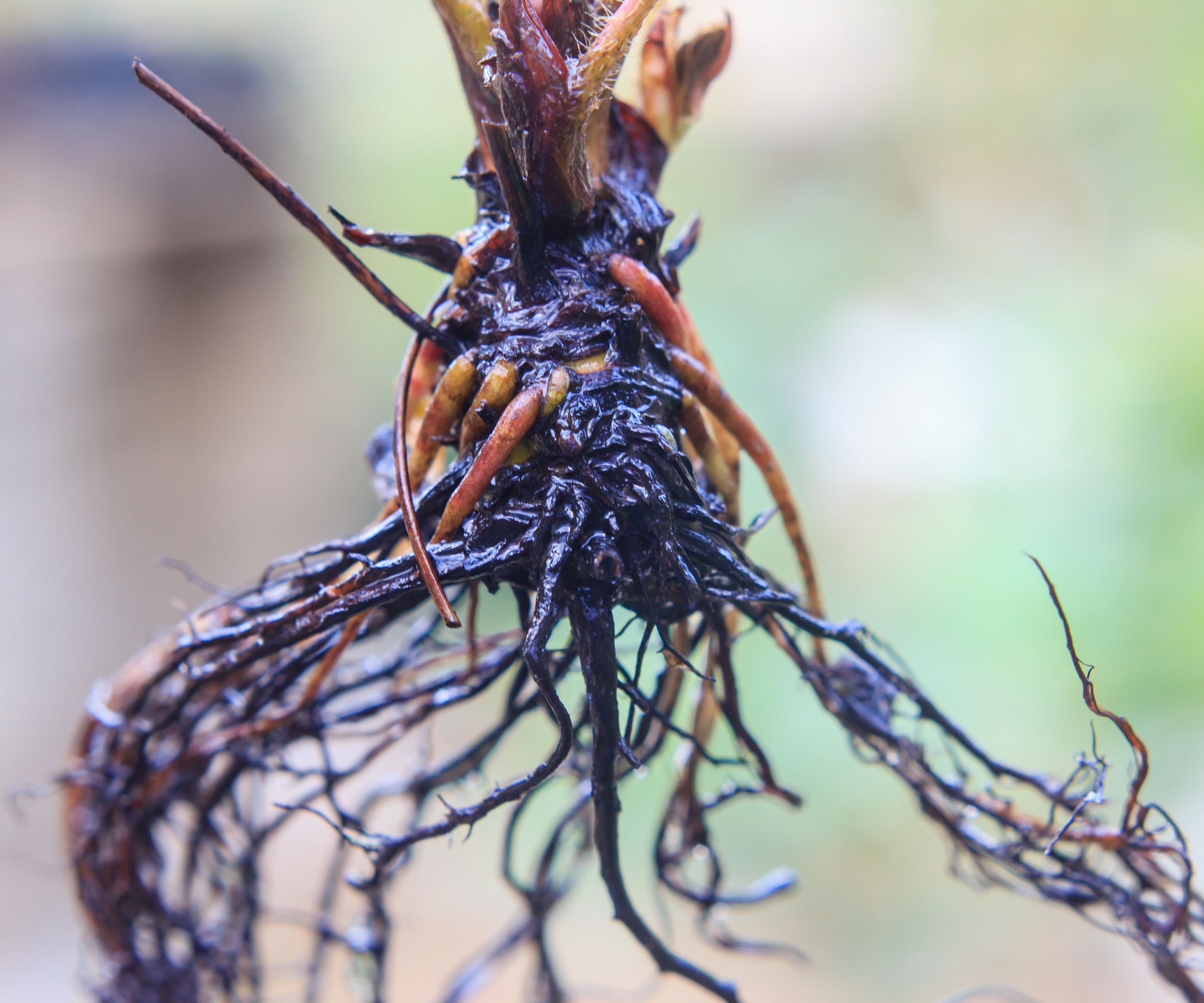
Some strawberry diseases, like black root rot, have a variety of causes. These often include the presence of pathogens or nematodes within the soil, or other environmental factors that make the plant ill-suited to growth.
Sign up for the Gardening Know How newsletter today and receive a free copy of our e-book "How to Grow Delicious Tomatoes".
Strawberries affected by root rot are most easily identified by an obvious lack of vigor, accompanied by black or shriveled roots. Though little can be done in terms of treatment, prevention is possible if you maintain healthy, well-draining soil. Ensuring adequate spacing between plants can also safeguard against this disease.
3. Leaf Spot
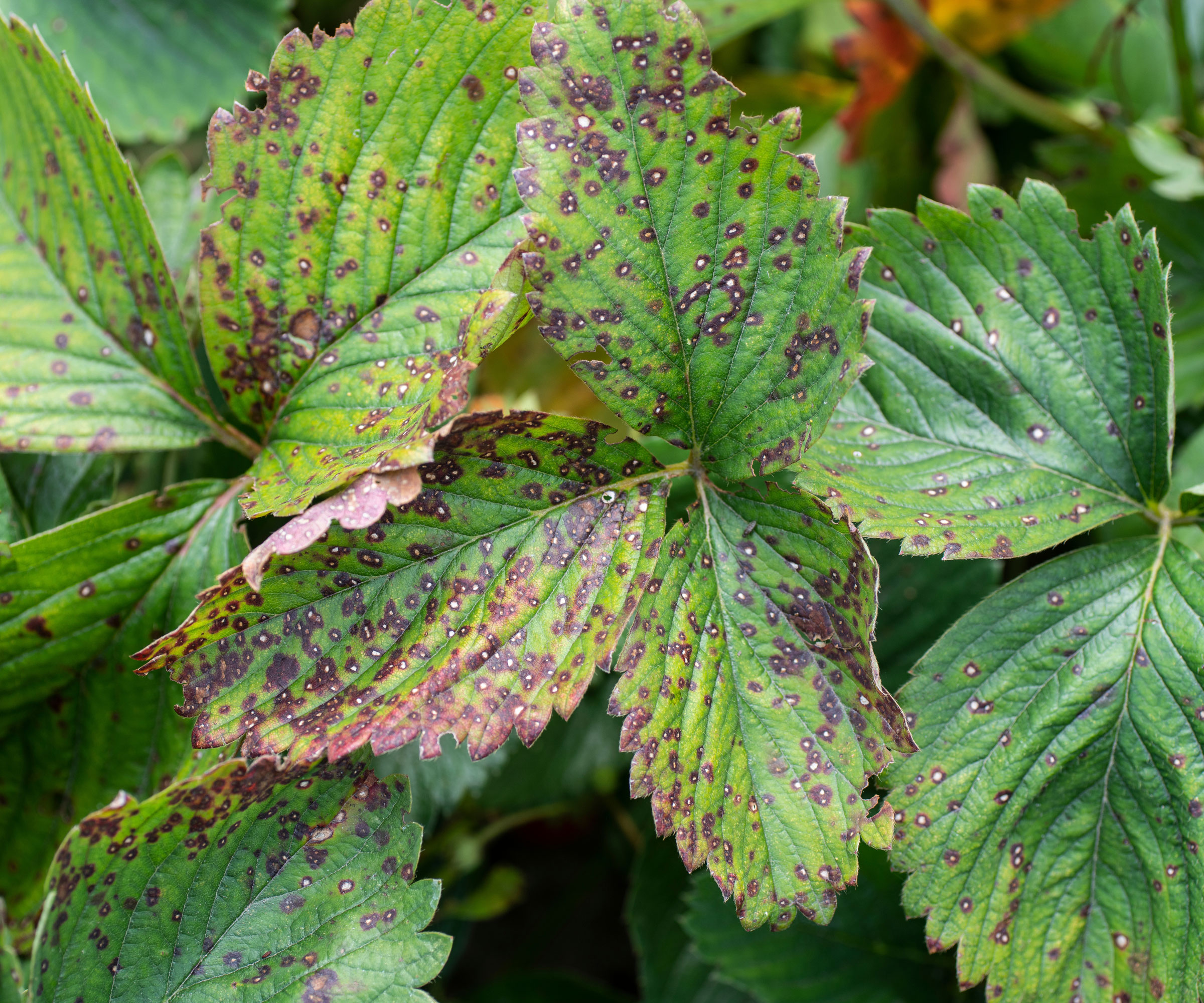
Yet another common problem, strawberry leaf spot disease is most readily identified by the presence of gray-white lesions across the surface of plant foliage. Over time, these margins continue to grow and deepen in color, causing leaves to dry and drop from plants prematurely.
Fungal spores further spread the infection, moving from plant to plant with the aid of wind or water. Little can be done to treat afflicted plants. Fungicide may help to slow the spread of leaf spot disease. Sadly, their complete removal from the garden is the most effective measure.
4. Leaf Scorch
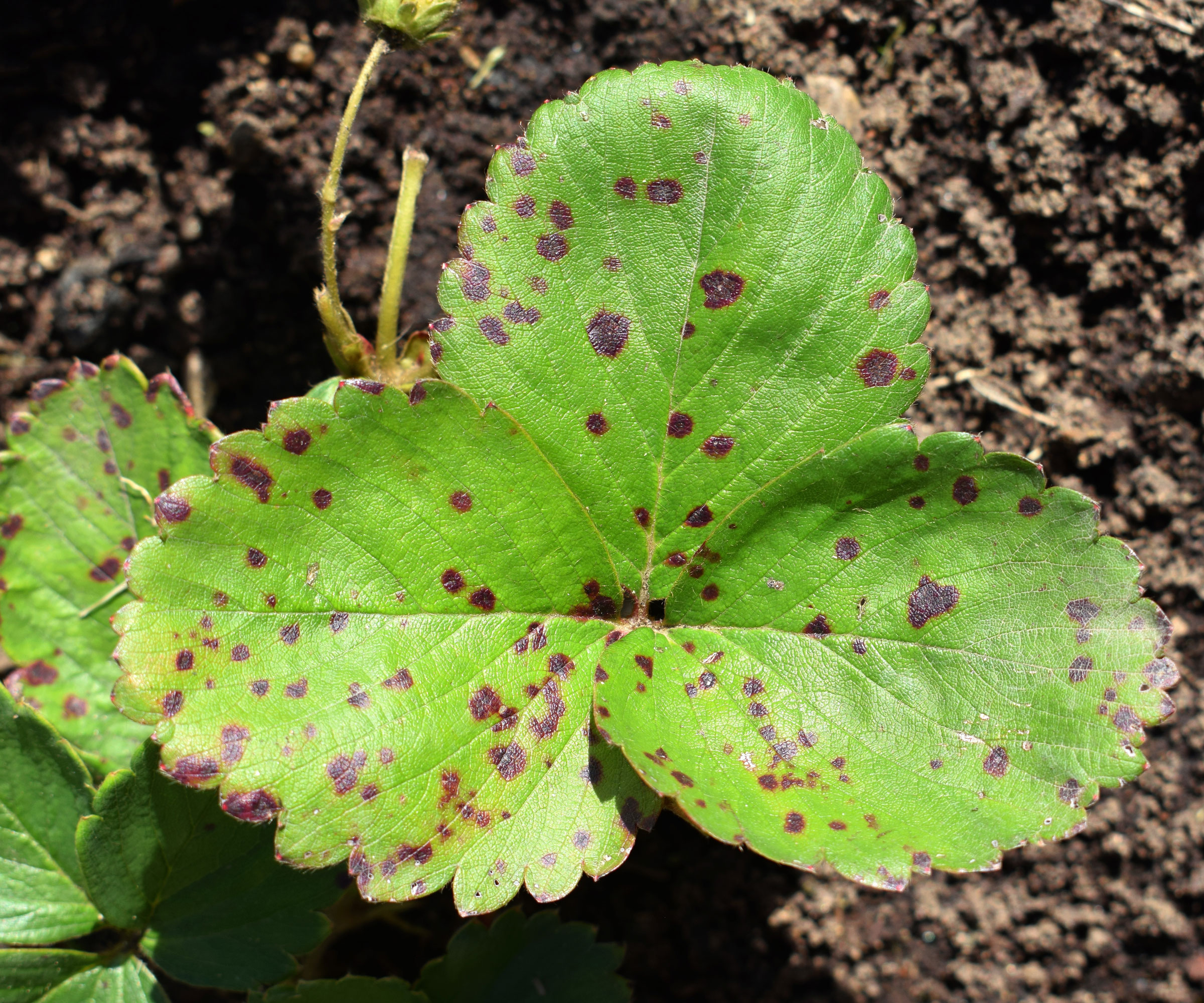
A strawberry leaf disease like scorch can drastically reduce plant productivity. Symptoms closely mimic those of leaf spot, but the appearance will vary in terms of pattern. Growers can expect infected leaves to go brown and die quickly, resulting in the rapid decline of plants.
Prevention of leaf scorch disease is the best course of action. Implement good watering and garden sanitation practices, whether growing in beds, containers or hanging baskets. This includes direct irrigation, avoiding contact with foliage, and the prompt removal of infected plant matter.
5. Mold
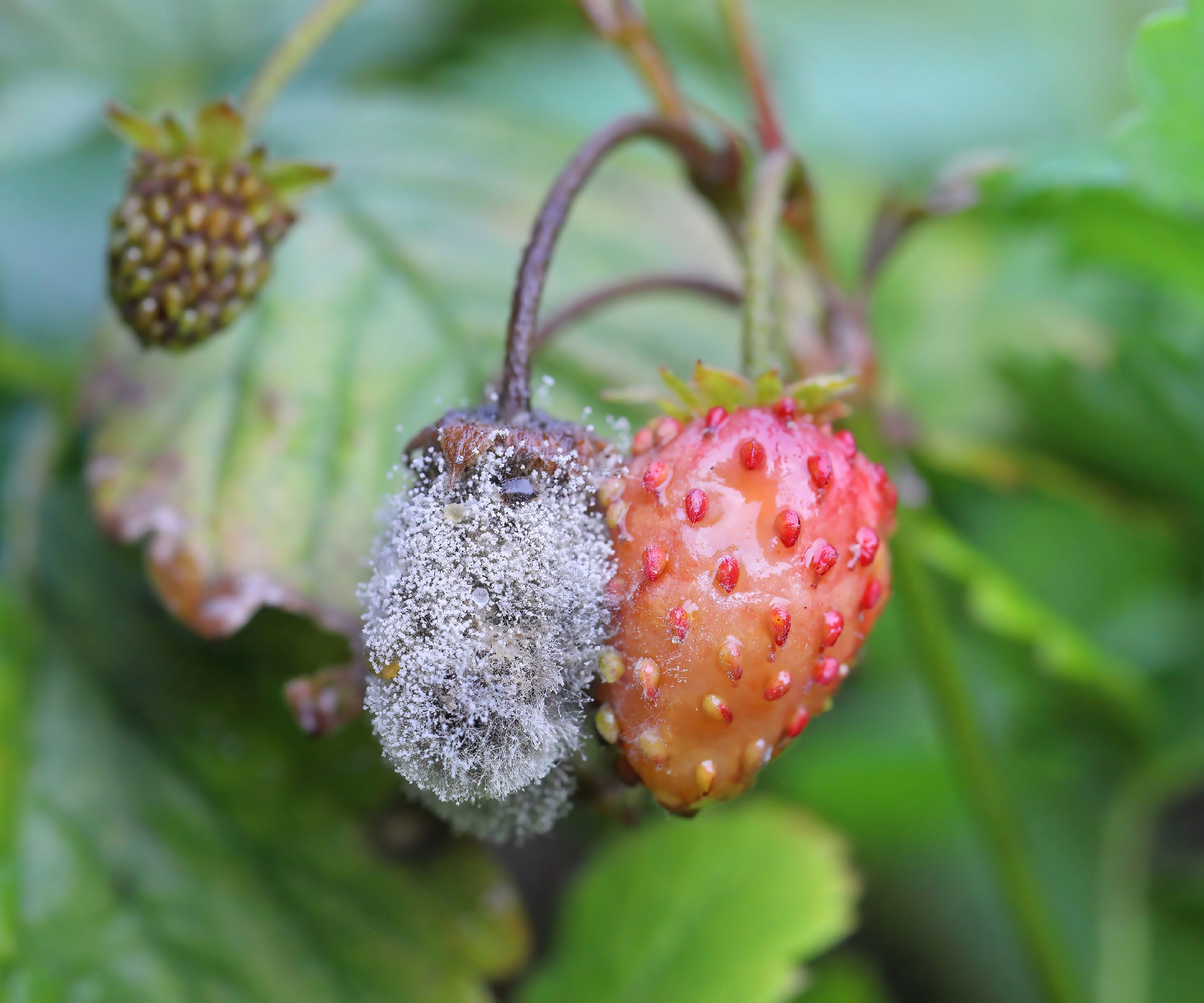
Gray mold of strawberry plants is the result of a fungus called Botrytis cinerea. Infection is most likely to occur in spring, when conditions are cool and wet. Plants affected by the disease will take-on a gray, hairy appearance, usually covering fruit and developing flowers. Rot occurs rapidly, resulting in complete hardening of the infected matter.
As the botrytis fungus is known to overwinter within beds, good sanitation is key in the prevention of the disease. Improved air circulation and the routine use of fungicide can also be helpful in the treatment of affected sites.
6. Powdery Mildew
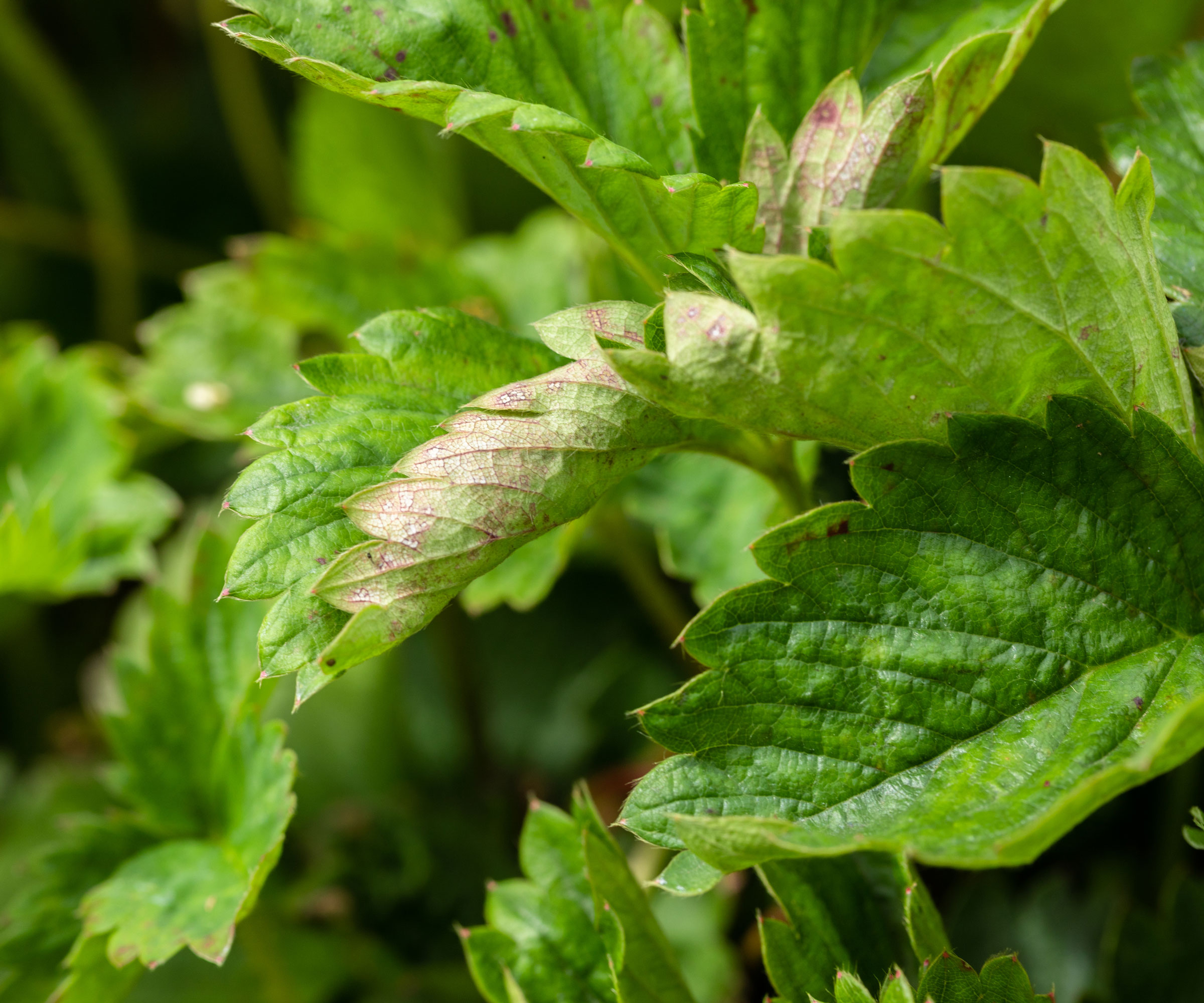
Powdery mildew can be especially problematic in strawberry beds (where multiple plants are bunched together). The disease may first become apparent with the appearance of a white, powder-like substance across the surface of the plant's leaves. Foliage then begins to curl and brown, eventually dropping to the ground.
Flowers may also be affected, preventing fruit set and reducing yield. If treating this disease on strawberry plants, the prompt removal of infected matter is vital, followed by preventative fungicide sprays.
7. Verticillium Wilt
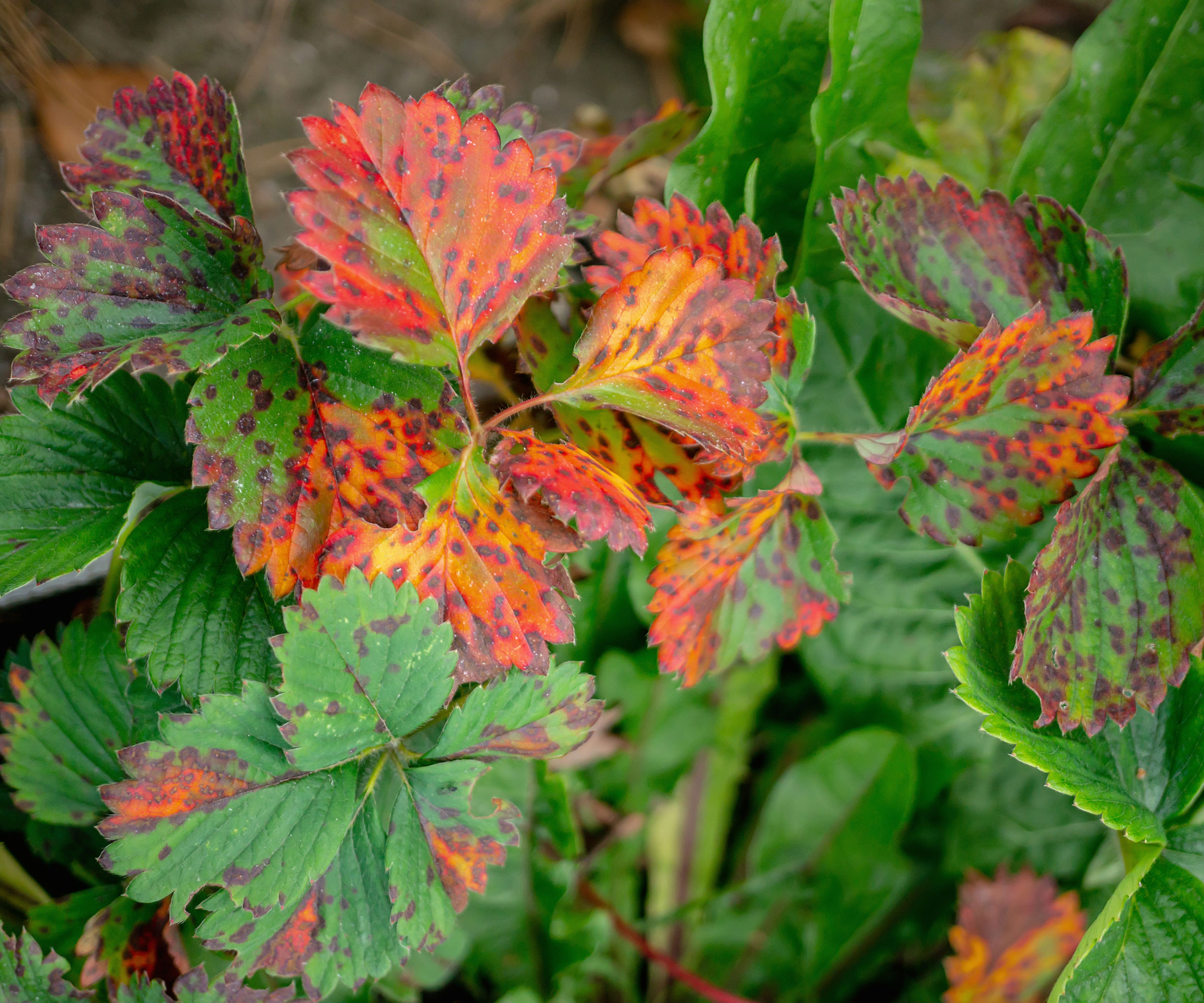
Verticillium wilt remains amongst the most common pathogens to affect edible plants. Strawberries often contract the disease when planted where the pathogen has already built up within the soil. Sudden wilt or drooping foliage are the first signs of infection. Leaves may change from green to varying shades of red or brown.
Eventually, each leaf will dry completely. Those hoping to prevent the disease should arrange new beds carefully. If growing strawberries in raised beds, be sure to select varieties which demonstrate good resistance to the pathogen.
Frequently Asked Questions
How Can I Reduce Risk of Strawberry Diseases?
Good garden practice is the best way to keep strawberry beds healthy and happy. This includes special attention to soil preparation and spacing at planting time. It also involves the use of proper strawberry watering applications. Irrigating plants deeply and from below will help to prevent the spread of pathogens and maintain vigor.
Watering in the right way is obviously different if you grow strawberries using hydroponics, but in this case, good airflow and spacing are equally important in reducing the risk of disease. Maintaining good sanitation, and removing diseased plant matter in a timely manner will help keep strawberry beds going strong.
What does a Sick Strawberry Look Like?
Disease of strawberry plants can manifest in a variety of ways. Changes in the appearance of plant foliage is most common. This includes variation in color, as well as the development of spots or lesions. Mold, mildew and changes in texture should also signal a cause for concern.
This article features products available from third party vendors on the Gardening Know How Shop. Keep in mind that our plant inventory is limited - so if you’re thinking of purchasing, don’t wait!

Tonya Barnett has been gardening for 13 years. Flowers are her passion. She has transformed her backyard into a cut flower garden, which she regularly chronicles on her YouTube channel http://www.youtube.com/@tonyawiththeflowers.
